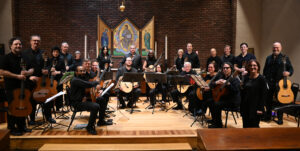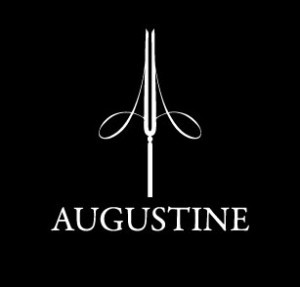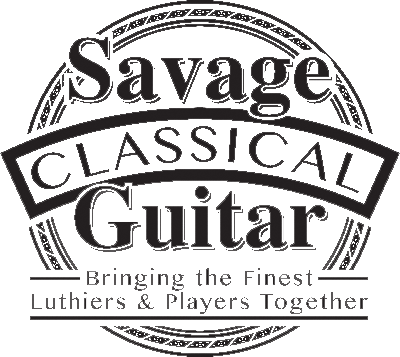by Anthony Bez
February 2008
The Brazilian Guitar – Everybody has a fun time and a new star comes to town
Guitar Marathon
92nd St. Y
January 27, 2008
Afternoon session 2:00 pm
Kudos and appreciation to John Schaefer, host, Sergio and Odair Assad, co-curators, and David Spelman, co-curator of this year’s biennial guitar marathon. This year’s theme of the Brazilian guitar made for a thoroughly entertaining and interesting day. It must certainly take a lot of effort to gather up a passel of guitarists and audience for six hours of concert entitled “Marathon.” I’m sure many people would groan at the prospect. However, guitar is such a huge part of our collective culture and musical landscape that its diverse dimensions can still keep our attention. Adding into the mix the theme of Brazil only made the day more interesting and entertaining than previous marathons. Thoughtful and unobtrusive question-and-answer sessions by John Schaefer added a further entertaining and also educational dimension to the experience. Much of the background information that follows comes from these conversations.
It was very much a day of friends and family onstage as the fabulously entertaining artist Badi Assad led off the program followed by her brothers Sergio and Odair, the world’s premier guitar duo. Badi chose to start off with a balladic intro to Chico Buarque’s “Joana Francesa,” then doubling the melody with her voice. She had a nice sound though I perceived some kind of ring from the amp. I got used to that by the second piece, “Abanca Do Dostinto” by Billy Blanco. This included some tasty harmonics, mouth percussion, and tapping. The intro was sung and spoken using Badi’s inimitable style of vocal effect for percussion. The interlude was an upbeat song that went on to use strum, tapping, and hand percussion techniques.
Sergio and Odair Assad have always been dynamic players. Today was no exception where that is concerned, but one difference struck me. It seems to me that sometimes parts of their performances are lost to the virtuosity and pyrotechnic display. Though they are not flamboyant personalities onstage, playing to the audience’s need for excitement and speed takes away from the capability of the instrument. Today, the material they chose and perhaps the centeredness of playing pieces closer to home allowed us to really hear more tonal contrast and soul. The first piece they played displayed such contrast clearly in Heitor Villa-Lobos’s “Alienda do Cabloco” which was quite lyrical and Debussyesque. Following this was the Choros No. 5 with its darker character and rhythmic interludes. In “Amparo,” a balladic Jobim piece, we heard the use of rhythmic percussion with a low tambora/chord accompaniment and ostinato, with a well-stated melody modulating and building until the end. Another Jobim tune, “Sunflower,” followed with a dance kind of intro and the gamut of jazzy timbres including Odair sounding very much like an electric jazz guitar. A Waltz by Radames Gnattali was performed with Sergio playing interludes lush in the character of Piazzola or Lauro. This first set ended with another Gnatalli piece, “Cuarta Jaca.” Here was the upbeat virtuosity in a more idiomatic jazz exploration with improvisational-type trading of solos between the brothers.
Fabio Zanon, at this point, seemed much more the classical guitarist as he performed the Choros No. 1 followed by Etude No. 11 by Villa-Lobos. What a wonderful instrument he was playing, suitable for his brilliant sound. It was good to hear these favorites as they might be taken for granted otherwise. Fabio added in some improvisation and harmonics as well in the Etude. As he hit his stride he moved on to play a couple of pieces by Gnattali with stunning clarity, the “Toccata in Samba Rhythm” with its rhythmic, moody jazz feel and musical reference to Gershwin and “Frevo,” a highly virtuosic and tasty tidbit that suggested a good bookend. Well, so much for that suggestion, Fabio went on to play Etudes Nos. 4 and 6 of Francisco Mignone. No. 6, which was played first, was made up of very technical classical sequences more evocative of a Tocatta than the previous Tocatta. There was a lovely saudade-type interlude with accompaniment styles under single note melody and a recap and coda. No. 4 was made up of descending arpeggio sequences that eventually morphed into rhythmic variations, very technical as well.
Arthur Kampela is an awesome modern, edge-of-the-envelope composer with astounding technique. From the brief interview on stage with John Schaefer, you can tell he also has deep respect for and knowledge of the history of Brazil and its music. He played his Percussion Studies Nos. 1 and 2. No. 1 was a very modern composition of which my first impression was that of a flamenco Siguriyas song and accompaniment. Arthur displayed an amazing rhythmic and tonal palette with the gamut of percussion effect. The contrasts revealed his adeptness and musical awareness as he played what sounded like prepped effects with his fingers only. In No. 2 we heard a very cogent juxtaposition of techniques to form phrases and a demonstration of a panoply of sound with only two unnatural devices produced by a spoon. In Kampela’s “Exoskeleton,” he played on a viola in a classical guitar posture, plucking the strings pizzacato at one point, producing a wonderful tremolo line in a cross pollination of guitar technique. This was amplified to excellent effect. Kampela was reading what must have been a difficult score. He switched to a more traditional position in order to use what appeared to be a plastic tie wrap or stick of some sort as a bow replacement. This produced sounds and rhythmic effects based on friction, like the gradually slowing ticks which end the piece on a single tick produced by one last tug on the bowing device.
In a marvelous bit of programming we next were treated to the sounds of Romero Lubambo and Pamela Driggs. This was the quintessential easy Bossa Nova segment. First Romero played a Baone called “Pro Flavio” that he wrote for his father. This signaled a return to an upbeat acoustic jazz orientation. In Carlos Lyra’s “Influencia do Jazz,” we were treated to what sounded like an upbeat Bossa with strum breaks to establish the groove. Romero was joined by his wife, Pamela, who sang Baden Powell’s “Deixa” in a welcome, clear voice that went straight to the heart, in perfectly understandable English! This was more the traditional bossa style to which we’ve become accustomed, and what a treat it was. Their last piece was by Filo Machado, “Perfume de Cabala” or “Onion Perfume.” This was an upbeat groove and a perfect way to end their set. If you’re wondering about the title, it refers to a saying that “if the love is right then the perfume smells like onions.” What fun!
Celso Machado performed original work for voices, percussion and guitar, but that’s not all. This guy is too much fun. He started off singing with that real Bossa Nova sound and accompanied male voice like old Jobim recordings. He exhibited great vocal shades and was quite fantastic. In his second piece, we got to see some more of what was in store as he used his mouth, the mike, the mike stands, plastic water bottles, mouth cavity, thighs, chest, hands and jaw harp to produce a wonderful sonic experience. He went on in the next piece to use drones and tuning while playing to fashion a sort of countrified world music with rhythmic strums, percussion effects with both hands, whistle and imitative percussion like a Bateria or percussion battery. In his last sonic excursion, everyone had fun and he involved the audience as he used hand percussion to get a groove, then made imitative bird and jungle sounds as a prelude to reproducing a full-out rainforest thunderstorm with rain produced by the audience clicking, patting their thighs and stamping their feet. Apparently, Celso does a lot of work with young people and kids. John Schaefer had mentioned how wild it would be to have him do your childrens’ party. Well, in fact, it happened to be Celso’s birthday. Happy Birthday!
As announced, the final performer of both sets for the day was Yamandu Costa, because no one in the lineup wanted to follow this young twenty-something monster guitar player. This young gentleman was the find of the day. He is already the most famous instrumentalist in his native Brazil and these were his New York debuts. It seems that with all the jamming and planning going on backstage, no one could keep up with the guy. He started with an original work. I didn’t quite catch the tuning but it appeared to be like a lute tuning with a low down D. What a sound! This is the real deal, deep, instrumental solidity and virtuosity, phenomenal comfort and lack of affectation with picados that sounded like Paco De Lucia. In fact, his general technique seemed more like flamenco but his music was a true Brazilian expression with him singing along or whistling with the melody while playing a full range of dynamics. His second tune was attributed to one of the Assad brothers. It was like an easy dream and a sweet one at that. He used a dulcet tone in simple melody also using the depth of a lowered E string to lull us. Finishing in a big way with Ernesto Nazareth’s “Brejiera,” he showed us his way of boldly flavoring a piece with varied rhythms sounding very much like a flamenco Columbianas. Needless to say he got the well deserved adulation of a standing ovation!
Well, of course there were encores. The Assads and Romero jammed on a melody, trading solos, then, joined by Celso Machado, they played what sounded like a humoresque with a great groove. With four guitars there were still plenty of inversions to go around and there was no crowding or doubling. There was an invisible fifth guy on percussion, no doubt, Celso. How do they do that?! What a pleasant afternoon concert!
Evening session 7:00 pm
Throughout the day, one of the things that presented a problem was getting a bead on the titles of the works being performed. The format was somewhat informal and we all appreciated that but many of the songs were either unannounced or announced in glib Portuguese. It took a little research to find out exactly what was played. I have included as much of the program as I could glean for the benefit of those who attended as much as for those who could not. I thank John Schaefer and Ian Paul for that information.
Badi Assad started the evening program with an original piece by her and Jeff Young entitled “The Being Between” dedicated to Badi’s newly-born daughter Sylvia. This was played with the guitar on her lap like a Japanese koto and sounding very much like a koto, then becoming a dulcimer-sounding lullaby. Badi used her wonderful vocal ability to imitate cooing and baby sounds to introduce and then to recap the piece. How human and connected can that be? Truly, this was an expression that we could all relate to. The next piece was “Asabranca” or “The Hummingbird Song” with a beautiful intro and harmonics and mouth percussion reminding me of some Milton Nacimento recordings. How do they do that percussion in the voice?! “Ah que saudade d’o ce” by Vital Karias highlighted Badi’s ability to modulate her voice to sound exactly like an echo machine. This coupled with a fast paced ostinato, tapped solo and varying vocalese and breathing made me want to jump up and exclaim “Sing It!” “Vrap” by Marco Ferreira and Badi Assad was an amazing improvisation with jaw harp and mouth percussion containing a tribute to the Assad brothers in a Freres Jacques snippet towards the end. This was a very moving and personal expression and very indicative of the Brazilian process of musical expression.
Sergio and Odair Assad again took the stage to play some Egberto Gismonti pieces. In the course of introducing the pieces and commenting about Yamandu Costa we actually got to hear Odair Assad speak! In offhanded praise of Costa he said himself that he never talks. The first, “Corto de Cordel” highlighted beautiful contrasts in simple statements with subtle enhanced timbres in expanded harmonies and sequential variations. This was also a countrified groove but quite sophisticated. They followed this up with “Palhaico,” which was a beautiful ballad in a very straight arrangement with a slow groove and some improvisational type trading of solos. “Tahhiyya li ossoulina” by Sergio Assad was a homage to Lebanese family roots with a middle eastern flavor punctuated with drumbeat effect and chords ending in a very effective strumming section.
Vinicius Cantuaria took the stage humbly and played a set of music that was very traditional and evocative, just solo voice and guitar. The first piece he performed was called “Briga do Namorado” or “Lover’s Spat.” The following pieces, “Claire,” “To You,” and “Voce E Eu” were sung and accompanied in a standard style. “Julia do Bolas” or “Julia in Boots” stood out with a funky dissonant vamp. This was a sincere expression of Brazilian Bossa Nova.
The next portion of program offered a good contrast as Allison Carvalho took the stage and was joined by Thiago de Mello and Jonathan Singer. She opened up solo playing a piece called “Lasso for a Friend.” She displayed her classical training in position and very solid classical technique and used it to pleasant musical effect despite her being plugged into an amplifier. The wonderful Thiago de Mello and Jonathan Singer then joined her for “Baiano e Movimento.” Thiago showed up despite having his arm in a sling. For some of us the show must go on. Jonathan actually helped him carry his instruments and placed them so he could play. The groove was maintained under solo guitar using a jug of the urdu drum variety, a box or cahon, seed pod, triangle and shakers. This was a very mellow presentation reaffirming the effectiveness of the classical guitar again. Thiago left the stage for the final piece of the set. “The Broken Samba” was sung and played with guitar and tambourine accompaniment.
I remember reading about Roland Dyens years ago and about his improvisation workshops and the quality of his playing and teaching. I thought to myself, “This is my kind of guy.” When I first actually heard him though I was amazed at the exquisite quality of his playing. Today was a reaffirmation of that observation. He is at the pinnacle of the fusion of musical styles and techniques for the classical guitar. His first piece was an improvisation that paid homage in the intro to Gershwin’s Rhapsody in Blue, then settled into a solo version of the Bachianas Brazilieras #5. Protesting that he was a “fake” Brazilian, he went on to perform “Feliciadade” by Jobim. He demonstrated a natural Brazilian expression and the heart of the guitar here in an exquisite arrangement with a full range of unaffected classical virtuoso techniques. “Djembe” followed, with its artful tuning down in mid-piece and the set ended with Baden Powell’s “Berimbau.” This featured tapping up front that made the guitar indeed sound like a berimbau with a joyful, songlike theme then extended percussion effects, some with pitches, and back to the groove fading rhythmically to the end.
At this point we had an interesting departure in feel and ensemble as Stephan Crump’s Rosetta Trio including Jamie Fox and Liberty Ellman took the stage to perform Crump’s Caesalpina Echinata. The name is a Latin botanical term for the pernambuco tree which is indigenous only to Brazil. From this tree comes all the mainstream bows made for bowed instruments throughout the world. Here, too, we had protests from the artist that he belongs in the “fake” Brazilian category as none of his trio is from Brazil. The trio consisted of double bass, electric/acoustic guitar and electric guitar. Starting with a meandering intro with a caressing percussion effect and moving into the first movement I was struck by the fact that it didn’t sound particularly Brazilian. It was more akin to our world music and modern jazz affinities extending from the likes of Paul Winter, Oregon, Pat Metheny etc. It is ironic though that so much of this sensibility and the ubiquity of these sounds and syncopation are derived from what was exported and fused musically from Brazil through the twentieth century. It reminded me that before Tropicalismo and Bossa Nova (New Beat) there was the Brazilian National Movement of the 1920s. Out of this came a renewed pride in the musical expression of Brazil with inspired composer Heitor Villa-Lobos at the fore. We, as guitarists, already owe him a debt of gratitude, but we must remember how the serious classical representation of Brazilian themes has affected our musical lexicon. I remember when I was at Berklee College, sitting with a fellow student who then turned to me and said, “Its all jazz, Tony, isn’t it?” Well, maybe it’s all Brazilian.
Again, what can I say to Yamandu Costa taking the stage except Bravo! Yamandu proceeded to play the pieces that he’d already performed in the afternoon session. He continued to astound us with his command as he completely changed the arrangements in an improvisational style. His original work was varied with sliding effects and diverse rhythms as he whistled and sang along. His second composition started with a great dissonant section that developed into a consonant dreamlike portion characterized by sweetness vacillating against broad dynamics and harmonic tension like a saudade with sung lyrical material. “Brejeira” ended the set again but with a different creative flare and flow and tremendous flamenco-like virtuosity. Perhaps they should nickname this guy Paco Jr. do Brazil. Standing ovation? You bet!
The encores started with Badi, Odair and Sergio playing over a clapped middle eastern worldbeat with an intriguing ostinato and Badi on mouth percussion. Romero and Celso joined them for a jam over great syncopated changes and again all together they did a Saudade-type intro with Badi on bass and voice with the accompaniment having a folk harp quality. While Celso was having fun trying to get the audience involved, Romero took an upbeat solo theme and it all ended in a driving train-like groove with Celso on percussion.
A wonderful, full, and interesting day had come to an end. Again, praise and thanks to host John Schaefer and co-curators Sergio and Odair Assad and David Spelman and the 92nd Street Y for the marathon and the innovative programming of our Brazilian friends and family.









